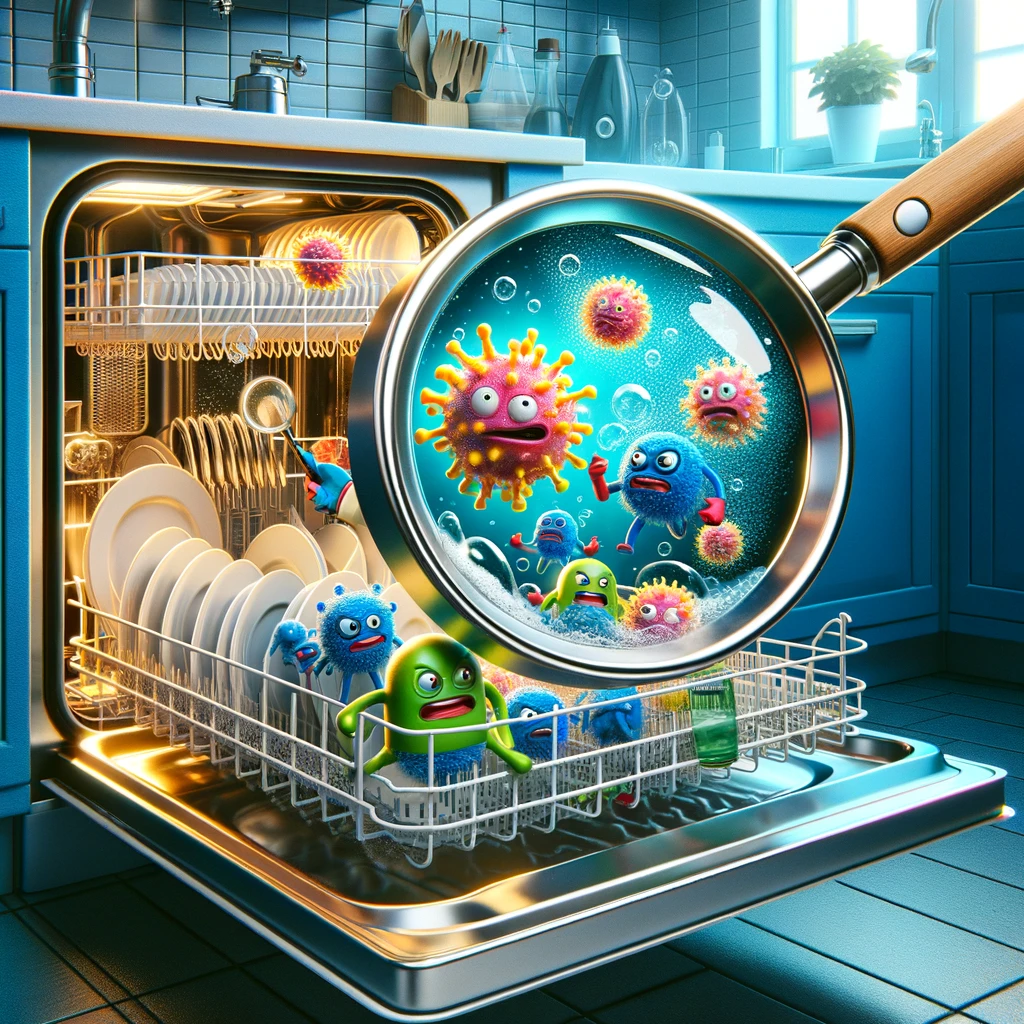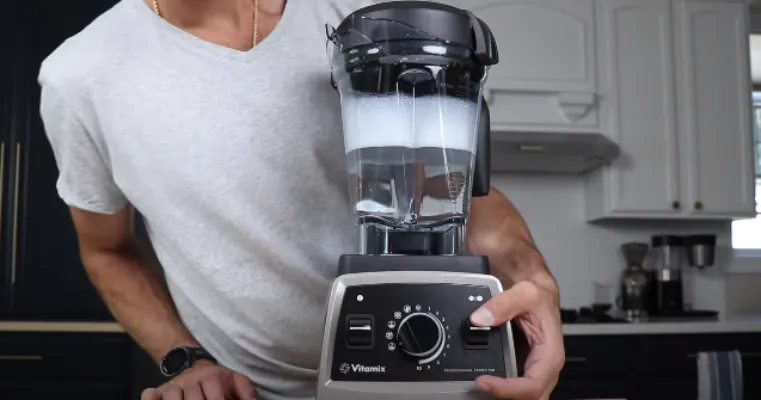Discover the Germ-Fighting Power of Your Dishwasher Detergent. Unveil the truth behind dishwashing detergents and their ability to sanitize your kitchenware. Our guide demystifies how surfactants, high temperatures, and advanced dishwasher features work together. They ensure a germ-free clean for your dishes.
Does Your Dishwasher Detergent Eliminate Germs ?
My personal journey into the world of home hygiene has taught me that most detergents contain bleach. They use it to fight bacteria and viruses. But, the real germ-slayer in your dishwasher is the scalding hot water. Experts, like Phillips, highlight that water temperatures around 55º Celsius (130º Fahrenheit) truly denature and destroy viruses. This ensures your dishes aren’t Degree clean, but germ-free.

Washing Dishes: A Deeper Dive
Now, let’s scrub a bit deeper into this topic. Washing dishes involves more than dipping them in hot water. You also scrub them with soap. This applies to pans, plates, and glassware alike. Air drying, soaking time, and using a clean towel are Degree as crucial. Consider the corners of a lightly soiled dish or the nooks of a serving dish – areas often missed.
Rubber gloves, sponges, and even the dish pan itself all play roles in this intricate dance of cleanliness. And let’s not forget about tough grease. Sometimes, a rubber spatula or baking soda can be more effective than the mightiest detergents.
Virus Inactivation by Dishwasher Detergents
It’s interesting to note how viruses respond to different dish-washing conditions. Degree 15 seconds at room temperature can make a significant difference. The largest decrease in viral titres happens around 43 °C. Attractants in detergents help achieve this rapid reduction. They do so even with lower temperatures and shorter exposure times. A complete inactivation might must a third of the time typically needed.
The Role of Dishwashers in Sanitization
In the realm of domestic dishwashers, the detergent and water form an alkaline environment. This is where bacteria and viruses get inactivated. Most dishwashers have wash programs with option buttons. For example, they may include an intensive wash at 65 C or a rinse at 70 C, with washing times from 6 to 8 minutes. They are like having a mini kitchen health inspector.
Higher-end machines on the market often come with Hygiene or Sterilizing options. These use heater elements in the USA. They use residual heat in a high-temperature final rinse elsewhere. Brands like Bosch feature the cold sidewall heat exchange and drying mineral Zeolite. They combine heat and chemical action to inactivate germs.
Misconceptions and Realities of Dishwasher Use
Many people believe that Degree loading and running a dishwasher will kill all germs. This is not true. But, this isn’t always true. The heated rinsing and drying process does trap and remove some germs, but not all. People often pour in detergents with bleach, thinking it kills everything. But, this is not always effective. The surfactants in the detergent do most of the cleaning. They emulsify and remove dirt and grease.
The Science Behind Sanitizing Dishes
Washing dishes doesn’t Degree remove food debris and grease. It also kills germs and bacteria. This is an interesting comparison between a kitchen and an operating room. In a commercial establishment, the sterilizing process adheres to regional statutes. The sanitizing step usually involves a mechanical hot water rinse. A final sanitizing solution, such as hypochlorite or quaternary ammonium, follows it.
Understanding How Bacteria and Viruses Survive or Die
The concept of FAT TOM helps explain why certain items, bacteria, and viruses survive or die under hazardous conditions. These living creatures need food. They also need a suitable acidity range and adequate time. They also need a favourable temperature range (40 to 140 degrees Fahrenheit), as well as oxygen and moisture. A dishwasher changes the environment. It affects the temperature, acidity, and water availability. This disrupts the normal conditions these creatures thrive in. The drying phase in a dishwasher further removes moisture. This is a critical element for the bacteria to survive.
Also Read: Can Your Dishwasher Eliminate Viruses?
The Effectiveness of Hot Water in Dishwashers
Using hot water in a dishwasher can kill bacteria more actually than handwashing. The water often reaches 146 degrees. This is because handwashing rarely exceeds 120 degrees, due to the risk of burns. Dishwashers can safely use hotter water. Dishwasher soaps activate and achieve their greatest dishwashing powers at higher temperatures.
The Science of Detergents and Bacteria Transfer
When washing dishes, it’s important to understand that germs and bacteria are not transferred. They’re often stuck on the surface due to lipids and carbohydrates. Detergents work by emulsifying these substances. This allows them to slip off and go down the drain. Some detergents even have antibacterial ingredients added to make sure germs die. But, this is often Degree conjecture. Many germs die soon anyway. They are unable to compete in the wild against other microorganisms.
Also Read: Dishwashers>>>
Usually Asked Questions:
How do dishwashers kill bacteria?
In the realm of kitchen hygiene, dishwashers combat bacteria, actually. Bleach in the detergent annihilates persistent germs. Attractants and detergents dislodge dirt, ensuring a comprehensive clean.
Does dishwasher detergent kill germs?
Dishwasher detergent functions similarly to hand soap and dish soap. It doesn’t kill bacteria outright, but actually lifts them off surfaces. This action allows the water in a dishwasher cycle to wash these germs away. It ensures your dishes come out clean and hygienic.
Does the dishwasher remove bacteria?
Washing dishes in the dishwasher yields significantly cleaner dishes compared to hand-washing. Even dishes that are not entirely clean from the washer have fewer bacteria than those washed by hand. This showcases the dishwasher’s effectiveness in reducing bacteria.
Does dishwasher kill parasites?
Most dishwashers reach a temperature over 100 degrees Celsius. This actually kills all living parasites. Some eggs may resist high temperatures. But, the high-pressure sprays used during the wash cycle typically rinse them away. This makes it extremely unlikely for any to survive.
Did detergents kill bacteria on dirty dishes?
Detergents are effective at cleaning surfaces. They also remove grease from dirty dishes. But, they do not kill bacteria. My years of expertise in home care have shown that detergents make dishes look clean. But, more steps are necessary to ensure they are free from harmful bacteria.
Conclusion:
Dishwasher detergents, combined with high-temperature cycles, actually reduce germs. They don’t ensure complete elimination. Surfactants in detergents play a crucial role in breaking down grease and dirt. They also aid in sanitization. Advanced dishwasher features, like intensive wash or sterilizing options, enhance germ reduction. Regular maintenance and using the correct detergent are key to maximizing your dishwasher’s germ-fighting capabilities.






